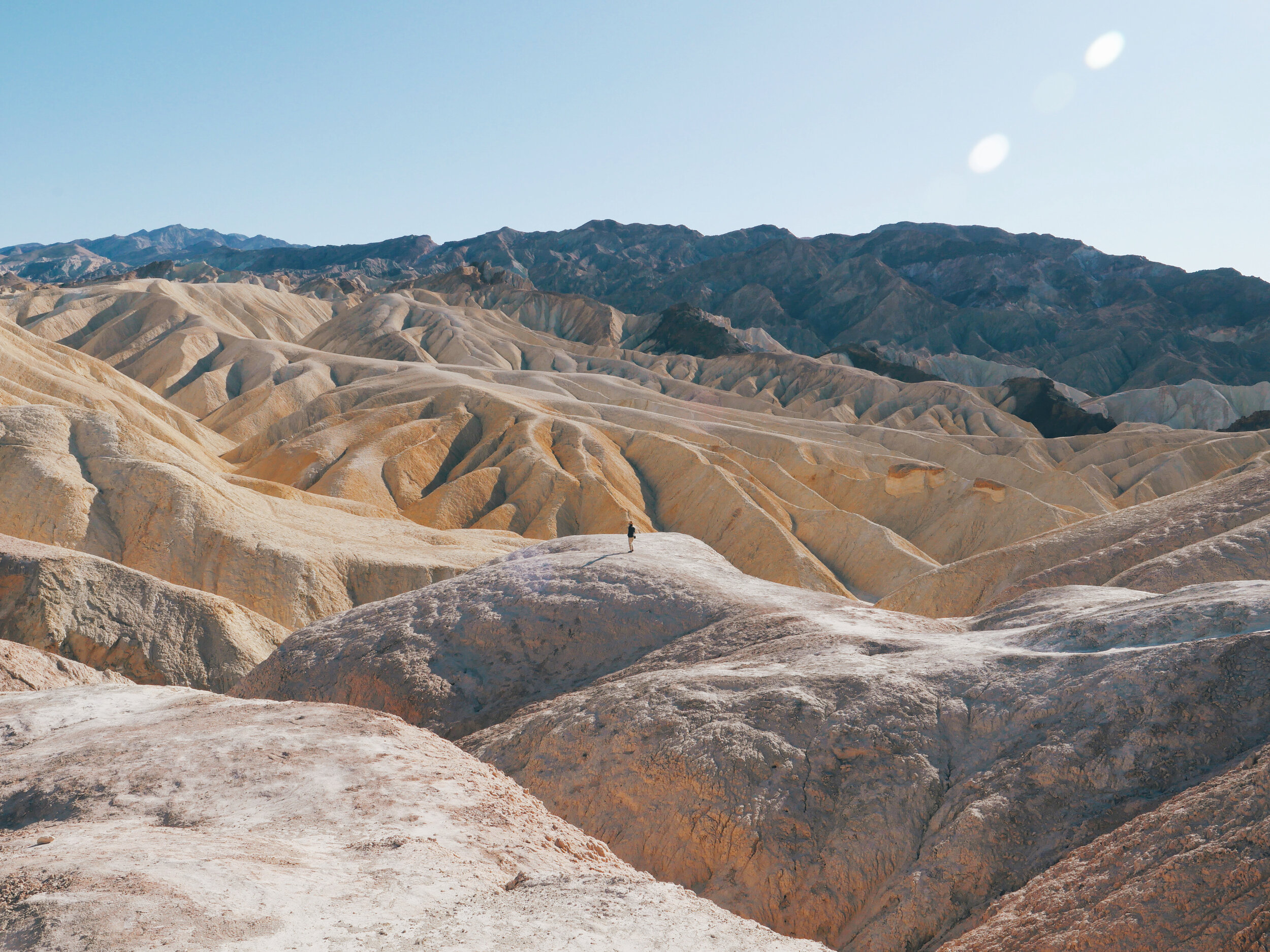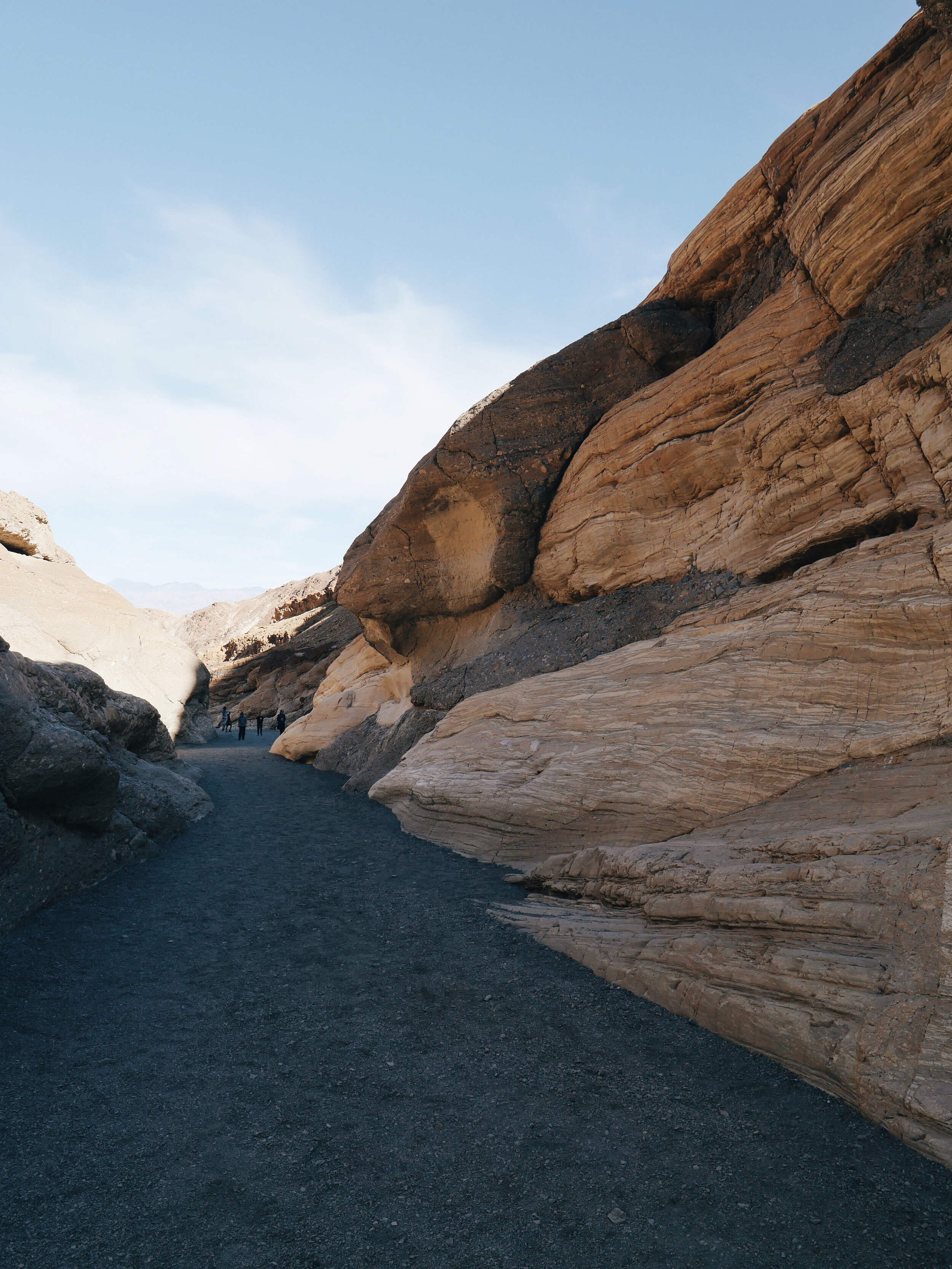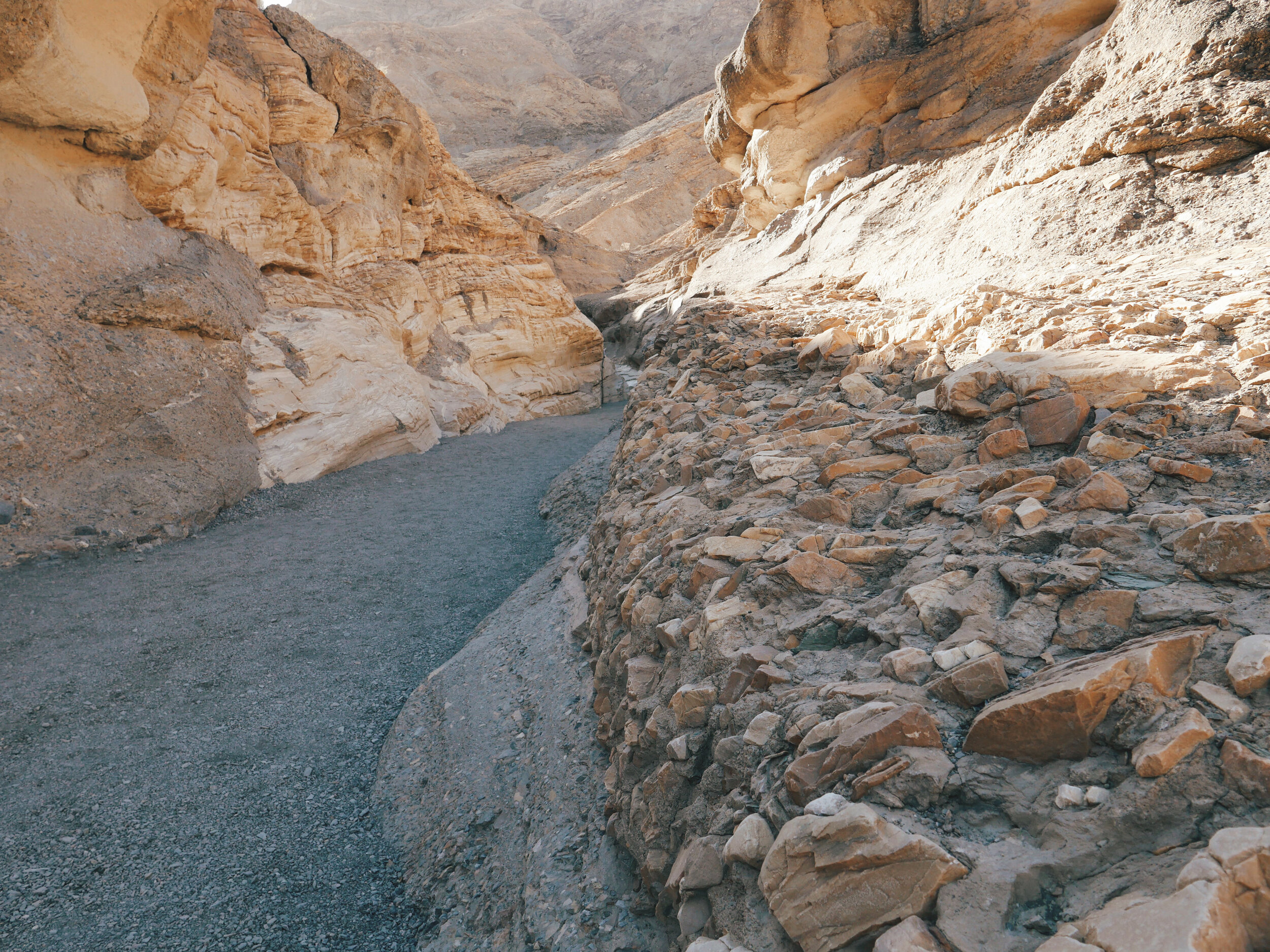Weekend Travel Guide in Death Valley Ntl Park
We only had a weekend to getaway to Death Valley National Park and we found that there is so much to see within a 30-40min driving radius of Furnace creek, where we stayed.
HOW TO GET THERE?
Getting here is very straight forward - we’ve picked the cities closest to give you an idea of how long it might take.
Coming from Los Angeles
Traffic is notorious for being horrible in LA so we are considering leaving on Saturday morning as opposed to Friday afternoon/night. Coming from the Downtown LA area, it should take between 4 to 4.5 hours to cover the approximately 290 mi distance. Basically, all you do is take Hwy 15 (the same road to Vegas), except you turn to go north at Baker. There is a back way that takes you through Lancaster; if you are coming from the Northern part of LA, that might make more sense. The Furnace creek area has 2 hotels, campsites and RV parks.
Coming from Las Vegas
Depending on where you live in Vegas this might take you a little longer. If you leave from the Las Vegas Strip area, it should take you 2 to 2.5hrs to cover the approximately 145mi distance. You could go for the day if you have a very early start. We stayed overnight in the Furnace creek area, in an RV park, but there are hotels and campsites available too.
WHAT TO SEE?
Death Valley is the largest national park in the contiguous United States so there is A LOT to see. We didn’t choose a very taxing itinerary because didn’t want to come back exhausted from the weekend. Here’s all the easy things we did:
Badwater Basin / Death Valley Salt Flats
Death valley has several famous sites, but the badwater basin is probably one of the most famous. Not only are the salt flats impressive, but they are also in a valley that lies at a depth of 282 ft (86 m) below sea level; the lowest point in North America. The hexagonal(ish) patterns that the salt crust forms make it even more special. Don’t forget your sunglasses! It’ll be bright out there.
Artist Palette drive
The Artist palette drive is a one way road built following the lines of the canyon. It’s super fun to drive but be cautious if driving a vehicle (like a van) longer than 25ft (7.6m) as there are deep dips and narrow curves. There are a few places to stop along the way and go on short hikes. The highlight of the drive is the cluster of colorful soil called ‘Artist Palette’. The ground has literally oxidized into a gamut of colors that you wouldn’t expect to find here. The colors are more pastel than super vibrant; regardless you’ll be amazed at how big the site really is.
Zabriskie Pointe
Zabriskie point overlooks the badlands of death valley - barren, mud-looking hills, undulating and crisscrossed by deep crevices. The rain has carved the crevices and there is no vegetation in sight. The color of the soil is a rich mustard and though this site is most famous for sunrise, it is just as stunning in the afternoon.
Mesquite Sand Dunes
Death valley has several sand dunes; the Mesquite sand dunes are easily accessed from Hwy 190 and are a popular place for sunset. The tallest sand dune stands at 100ft (30m) but you don’t need to climb this one to get a taste of the dunes. This site is also popular for star gazing on nights when the moon is new - that’s when the moon is not visible so the sky is darker. And if you get hungry, these dunes are close to the Stovepipes general store.
Mosaic Canyon hike
Like the name implies, this is a canyon hike and you get to see rock formations that look like mosaics. The hike is not difficult but it does require some scrambling; enough to satisfy the inner child in you. We didn’t hike with kids, but we did see lots of families hiking this trail. The elevation gain, 1,200 ft (366m), is very gradual and comfortable. You end the hike at a dry fall that’s very impressive, pictures don’t do it justice. Bring water if you think it’ll be hot, otherwise, this hike is also close to the Stovepipe general store, you can definitely replenish there.
Harmony Borax Works
In the late 19th century, and into the 20th century, parts of what is now Death Valley national park were privately owned. Close to Furnace Creek lie the remains of the Harmony plant, which processed borax. Borax has many uses but the most common ones, nowadays, are insect killer, laundry booster and water softening agent. Back then, borax was processed at this plant and pulled by a team of 20 mules back to the closest railroad line. This interpretive trail is definitely worth a visit!
We put together a short video that you can find here:
Death Valley Ntl Park | Easy weekend travel guide
We hope you enjoyed our weekend travel guide to Death Valley National Park. If you have questions, or comments, please leave them below, we’d love to hear from you.



















